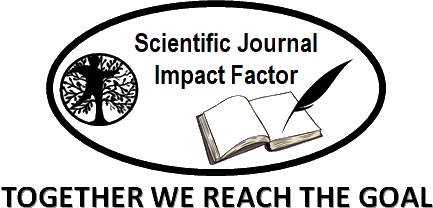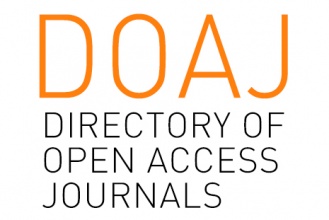Analysis of the Form of Presentation and Meaning of Ho Hei Song in the Hunting Ceremony in the Community of Kampung Kawa, Labolewa Village
Abstract
The Ho Hei song in the hunting ceremony has a coherent and contextual meaning with the hunting process activities carried out by the Kawa people. The meaning of Ho Hei's singing is related to local social life. The purpose of this study is to find out the form of presentation and meaning of Ho Hei's singing in the hunting ceremony in the people of Kawa Village. This study uses a qualitative descriptive method with an ethnographic method. Data collection was carried out by observation, interview and documentation techniques. The subject of the study is a group of Kawa people consisting of old men, men and young people. The results of the study show that 1) the form of presentation of Ho Hei singing in the hunting ceremony has three stages, namely the initial stage (preparation), presentation (core) and end (closing) 2) This song contains social meanings such as cooperation, mutual help, embracing and doing good to others. This song contains contextual meanings, referential and connotative.
Keywords
Full Text:
PDFReferences
Banoe, Pono. (2003 ). Kamus Musik. Yogyakarta: Kanisius.
Balsomang, Y. (2022). Analisis Fungsi Dan Makna Nyanyian Oke’ Di Masyarakat Semau. Tambur: Journal of Music Creation, Study and Performance, 2 (1), 24-37.
Feryansyah & Widyanarto. (2022). Analisis Bentuk Penyajian Kesenian Dikir Kepri Bermadah Oleh Sanggar Saidina Ali, Pulau Lengkang. Jurnal Tari, Teater dan Wayang, 5(2), 46-50.
Geeertz, Hildred, (1981). Aneka Budaya dan Komunitas di Indonesia. Jakarta: Yayasan Ilmu-Ilmu Sosial & FIS UI.
Karyawanto, H., & Sarjoko, M. (2019). Penyajian Musik Goa Tabuhan Di Pacitan Jawa Timur. Jurnal Promusika, 7 (2), 106-120.
Koba, Hendrikus B., Fikri, K., & Dopo, F. (2023). Kajian Fungsi dan Bentuk Penyajian Nyanyian Naro Dalam Ritual Adat Reba Masyarakat Radabata Kecamatan Golewa. Jurnal Citra Pendidikan, 3(2), 874-885.
Musdalifah., Nensilianti., Faisal. (2021). Makna Simbolis dalam Nyanyian Tradisional Ritual Mangade Masyarakat Bugis Mallawa Maros: Kajian Semiotika Rolland Barthes. Indonesian Journal Of Pedagogical and Social Sciences, 1(1), 193-205.
Muhammad, M., & Raharjo, E. (2014). Kajian Bentuk Pertunjukkan Grup Musik Angklung Kridotomo di Yogyakarta. Jurnal Seni Musik, 3(2), 61-66.
Nono, F., Dopo, F., Dopo F, Bate. (2024). Kajian Struktur Penyajian Musik Go Laba Dalam Ritual Pembuatan Rumah Adat Di Gurusina. Jurnal Citra Pendidikan, 4(3), 1869-1879.
Prestisa, G., & Susetya, B. (2013). Bentuk Pertunjukkan dan Nilai Estetis Kesenian Tradisional Terbang Kencer Baitussolikhin Di Desa Bumijawa Kecamatan Bumijawa Kabupaten Tegal. Jurnal Seni Musik, 2(2),1-14.
Rasiah, dkk. (2022). Makna dan Nilai Budaya Dalam Lagu-Lagu Daerah Muna Sebagai Model Pembentukan Krakter Unggul. Jurnal Ilmu Budaya, 10 (1), 88-101.
Roffiq, A., Qiram, I., & Rubiono, G. (2017). Media Musik dan Lagu Pada Proses Pembelajaran. Jurnal Pendidikan Dasar Indonesia, 2(2),35-40.
Rohidi, T. R. (2000). Kesenian Dalam Pendekatan Kebudayaan. Bandung: STISI Press.
Sormin, E., Bara, B., & Simangunsong, E. (2023). Analisis Struktur Melodi dan Makna Lagu “Sayur Kol” Karya Punxgoaran. Journal of Music Science, Technology, and Industry, 6 (1), 111- 121.
Woi, A., Dopo F., & Muga, W. (2021). Bentuk Musik Vokal Danding (Kelong) dan Makna Syairnya dalam Ritual Adat Penti Desa Lenda Kecamatan Cibal Barat Kabupaten Manggarai. Jurnal Citra Pendidikan, 1(4), 524-529.
DOI: http://dx.doi.org/10.18415/ijmmu.v12i2.6626
Refbacks
- There are currently no refbacks.
Copyright (c) 2025 International Journal of Multicultural and Multireligious Understanding

This work is licensed under a Creative Commons Attribution-NonCommercial-NoDerivatives 4.0 International License.
https://ijmmu.com
editor@ijmmu.com
facebook.com/ijmmu
Copyright © 2014-2018 IJMMU. All rights reserved.



































